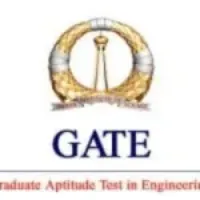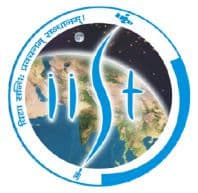Latest Applications Open 2024:
GATE 2025 Syllabus of Metallurgical Engineering has been Released. GATE 2025 is a national-level exam organized by IIT Roorkee. The Engineering Graduation Skill Test (GATE 2025) is organized for admission to PG courses in engineering and technology, specifically ME/M.Tech.
GATE 2025 will be conducted jointly by One of the IITs, and the Indian Institute of Technology (IISc), Bangalore, on behalf of the Department of Higher Education (Ministry of Human Resource and Development) MHRD, Government of India, and NCB-GATE.
The Exam will be held on 1st, 2nd, 15th & 16th February 2025. See here for complete information about the GATE 2025 Syllabus.
GATE 2025 Metallurgical Engineering Syllabus – PDF Released
GATE 2025 Metallurgical Engineering Syllabus has been Released. Click to Download Metallurgical Engineering Syllabus Pdf.
Section 1: Engineering Mathematics
Linear Algebra: Matrices and Determinants, Systems of linear equations, Eigenvalues and Eigenvectors.
Calculus: Limit, continuity, and differentiability; Partial derivatives; Maxima and minima; Sequences and series; Test for convergence; Fourier series.
Vector Calculus: Gradient; Divergence and Curl; Line, Surface and volume integrals; Stokes, Gauss and Green’s theorems.
Differential Equations: Linear and non-linear first-order ODEs; Higher order linear ODEs with constant coefficients; Cauchy’s and Euler’s equations; Laplace transforms; PDEs -Laplace, one-dimensional heat and wave equations.
Probability and Statistics: Definitions of probability and sampling theorems, conditional probability, Mean, median, mode and standard deviation; Random variables; Poisson, normal and binomial distributions; Correlation and regression analysis.
Numerical Methods: Solutions of linear and non-linear (Bisection, Secant, Newton-Raphson methods) algebraic equations; integration by trapezoidal and Simpson’s rule; single and multi-step methods for differential equations.
Section 2: Thermodynamics and Rate Processes
Laws of thermodynamics, activity, equilibrium constant, applications to metallurgical systems, solutions, phase equilibria, Ellingham and phase stability diagrams, thermodynamics of surfaces, interfaces, and defects, adsorption and segregation; basic kinetic laws, the order of reactions, rate constants, and rate-limiting steps; principles of electrochemistry- single electrode potential, electrochemical cells, and polarization,
Aqueous corrosion and protection of metals, galvanic corrosion, crevice corrosion, pitting corrosion, intergranular corrosion, selective leaching, oxidation and high-temperature corrosion – characterization and control; heat transfer-conduction, convection and heat transfer coefficient relations, radiation, mass transfer – diffusion and Fick’s laws, mass transfer coefficients; momentum transfer – concepts of viscosity, shell balances, Bernoulli’s equation, friction factors.
Section 3: Extractive Metallurgy
Minerals of economic importance, comminution techniques, size classification, flotation, gravity and other methods of mineral processing; agglomeration, pyro-, hydro-, and electro-metallurgical processes; material and energy balances; principles and processes for the extraction of non-ferrous metals – aluminium, copper, zinc, lead, magnesium, nickel, titanium, and other rare metals; iron and steel making – principles,
Role structure and properties of slags, metallurgical coke, blast furnace, direct reduction processes, primary and secondary steelmaking, ladle metallurgy operations including deoxidation, desulphurization, sulfide shape control, inert gas rinsing, and vacuum reactors; secondary refining processes including AOD, VAD, VOD, VAR, and ESR; ingot and continuous casting; stainless steel making, furnaces, and refractories.
Section 4: Physical Metallurgy
Crystal structure and bonding characteristics of metals, alloys, ceramics and polymers, the structure of surfaces and interfaces, nanocrystalline and amorphous structures; solid solutions; solidification; phase transformation and binary phase diagrams; principles of heat treatment of steels, cast iron, and aluminium alloys; surface treatments; recovery, recrystallization and grain growth;
Structure and properties of industrially important ferrous and non-ferrous alloys; elements of X-ray and electron diffraction; principles of optical, scanning and transmission electron microscopy; industrial ceramics, polymers, and composites; introduction to the electronic basis of thermal, optical, electrical and magnetic properties of materials; introduction to electronic and optoelectronic materials.
Section 5: Mechanical Metallurgy
Elasticity, yield criteria, and plasticity; defects in crystals; elements of dislocation theory – types of dislocations, slip, and twinning, source and multiplication of dislocations, stress fields around dislocations, partial dislocations, dislocation interactions, and reactions; strengthening mechanisms;
Tensile, fatigue and creep behavior; superplasticity; fracture – Griffith theory, basic concepts of linear elastic and elastoplastic fracture mechanics, ductile to brittle transition, fracture toughness; failure analysis; mechanical testing – tension, compression, torsion, hardness, impact, creep, fatigue, fracture toughness, and formability.
Section 6: Manufacturing Processes
Metal casting – patterns and moulds including mold design involving feeding, gating and rising, melting, casting practices in sand casting, permanent mold casting, investment casting, and shell moulding, casting defects and repair; Hot, warm and cold working of metals;
Metal forming – fundamentals of metal forming processes of rolling, forging, extrusion, wire drawing, and sheet metal forming, defects in forming; Metal joining – soldering, brazing and welding, common welding processes of shielded metal arc welding, gas metal arc welding, gas tungsten arc welding, and submerged arc welding;
Welding metallurgy, problems associated with the welding of steels and aluminium alloys, defects in welded joints; Powder metallurgy – production of powders, compaction, and sintering; NDT using dye-penetrant, ultrasonic, radiography, eddy current, acoustic emission and magnetic particle methods.
Other GATE Related Syllabus PDF
| Syllabus | Code | Syllabus | Code |
| Data Science & Artificial Intelligence | (DA) | Biotechnology | (BT) |
| Agricultural Engineering | (AG) | Civil Engineering | (CE) |
| Architecture and Planning | (AR) | Chemical Engineering | (CH) |
| Computer Science and Information Technology | (CS &IT) | Chemistry | (CY) |
| Electronics and Communication Engineering | (EC) | Electrical Engineering | (EE) |
If you any queries regarding GATE 2025 Metallurgical Engineering Syllabus, you can ask your query and leave comments below.

As a dedicated Biology Science graduate, I’m passionate about sharing the latest updates in national and state entrance exams through my blog. I aim to keep aspiring students informed about exam trends, important dates, and changes in syllabi. With a keen interest in education, I strive to offer valuable insights for students navigating the competitive landscape of entrance examinations and admission tests. Stay updated with me.


